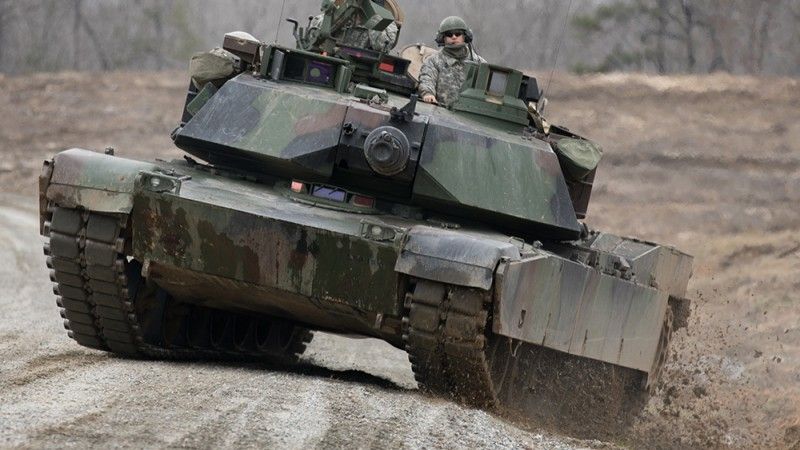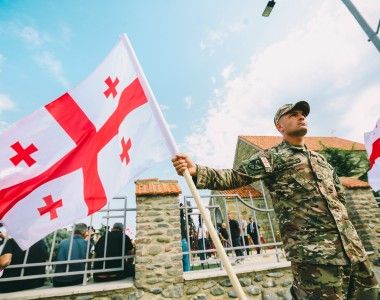The effects of Polish military build-up for Italy

After the outbreak of the war in Ukraine, the Polish government decided to raise the defence spending up to 4% of its GDP – the highest percentage among NATO countries –, double the number of soldiers and purchase an impressive number of armaments. In this sense, Poland could soon become the main European military power, second on the continent only to Vladimir Putin’s Russia - as Paolo Pizzolo writes..
The current Polish arms race enjoys the support of the government's majority and the majority of the parliamentary opposition. In March 2022, the Polish Parliament passed the Homeland Defense Law Ustawa o obronie Ojczyzny), a measure that the leader of the ruling political party Law and Justice Prawo i Sprawiedliwość), Jarosław Kaczynski, described as a means for countering "the imperial ambitions of Russia" and that in both houses of Parliament was approved almost unanimously. The purpose of the bill was to increase military spending and the number of soldiers of the Polish army. Consequently, the 2023 defence budget has provided for defence spending roughly 97 billion zlotys(about 20 billion euros), almost equal to 4% of Poland's GDP, representing the highest percentage among NATO countries.
Read more
In Italy, the Polish military build-up has raised a considerable political debate and has been viewed as an occasion to reprioritize Italy's foreign policy strategy and to bolster trade opportunities in the military sector. For years, due to geographical proximity, the Italian government has considered NATO's southern flank facing the Mediterranean and Middle East-North Africa (MENA) countries as a priority for Italy's national interest.Because of its geographical location, Italy is exposed to an "arc of instability" that runs from the Mediterranean Sea to the Balkans, with further extensions into the Persian Gulf, Central Asia, and Sub-Saharan Africa. Most of the challenges that threaten Italy's national security stemming from this vast area include unauthorized migration, organized crime, regional crises, terrorism, proliferation of weapons of mass destruction, and competition over energy supplies. Thus, Italy has always had an interest to allocate the resources of the Atlantic Alliance in Southern and Mediterranean Europe. However, the Ukrainian war obliged Italy to reprioritize its defence and security strategies.Most Italian political parties currently support Poland and other EU countries in providing Kyiv with military supply, Italy also being one of the main providers. In other words, the Ukrainian war contributed enormously in convincing the Italian political and military echelons to shift their attention towards East rather than South.
The current Italian government headed by Giorgia Meloni has reaffirmed Italy's willingness to achieve NATO's binding threshold of 2% of GDP expenditure in defence, but no sooner than 2028. According to the provisions contained in the latest financial manoeuvre, in 2023 is expected an overall increase of over 800 million euros in defence spending, thus increasingthe 2022 budget worth 25.7 billion to an estimated 26.5 billion for the current year. On the contrary, the 2023 Polish budget for defence provides for an expenditure of 97.4 billion zlotys, that is, about 20 billion euros:a minor figure in absolute terms than that of Italy,but much bigger when considering the overall GDP value and the very different economic weight of the two countries. While the Polish build-up plan concerns both strong rearmament and personnel restructuring,with the current number of enlisted people passing from 140.000 in 2022 to a maximum of 300.000 in the next five years, Italy enjoys an active military personnel of"only" 170.000.Thus, Poland aims at establishingin the near future the biggest national army within the EU, surpassing those of Germany, France, and Italy.
The Polish rearmament resulted in important opportunities for the Italian arms market. Among the various armaments that Poland ordered for its military build-up, Italy has been asked to provide 32 multi-role AW149 helicopters,worth 1.8 billion euros,to be assembledby Leonardo – Italy's leading companyforaerospace, defence, and security – in the factory of Świdnik, not far from Lublin.
Generally, the Italian response to Poland's rearmament in the context of the Ukrainian war has led to two major outcomes. First, Italy has reprioritized the key areas of its foreign policy strategy, shifting its attention from MENA countries to the Balkan and Eastern European regions, thus acknowledging and rediscovering the importance of NATO's eastern flank instead of its southern. Second, Italy has become alongside the US and South Korea one of the main military providers of Poland, which concluded with Rome procurements worth billions of euros especially in terms of helicopters' supply. At the same time, however, Italy presents itself as a pacifist country that, as enshrined in article 11 of its 1948 Constitution, repudiates war as a means for settling international disputes: this pacifist sentiment is widespread and ingrained among Italy's public opinion, often contrasting with the government's defence spending programs and perceived strategic priorities.
Paolo Pizzolo
References
Bianchi, A. (2023). "In Polonia l'esercito più potente d'Europa".Europa Today, 11 March.
Carugati, A. (2022). "Delrio: «Dobbiamo fermare la corsa al riarmo»".Il Manifesto, 19 March.
Dassù, M. and Massari, M. (Eds.) (2008).Rapporto 2020. Le scelte di politica estera. Rome: Italian Ministry of Foreign Affairs.
Miranda, V. V. (2011). "Striking a balance between norms and interests in Italian foreign policy: The Balkan and Libya". Istituto Affari Internazionali (IAI) Working Papers1111.
Palmas, F. (2022). "Armi. L'esercito più grande della Ue? Sarà in Polonia".Avvenire.it, 30 October.
Petronella F. (2023). "L'esercito più grande d'Europa: perché la Polonia si arma molto più dell'Italia".Upday, 18 March.
Pirone, D. (2023). "Ilriarmodella Polonia cambia l'equilibrio della difesa europea".Progresso Europa Riforme (PER), 8 February.
Sedia, G. (2023). "Polonia, il doppio della Nato: «Spese militari al 4% del pil»"Il Manifesto, 31 January.
Spocci, C. (2023). "La Polonia vuole molte più armi e molti più soldati".Il Post, 21 March.
The research has been supported by a grant from the Faculty of International and Political Studies under the Strategic Programme Excellence Initiative at Jagiellonian University.




